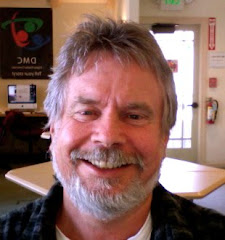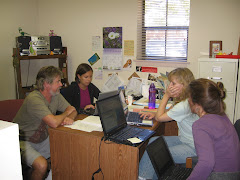First, the history of the term, Intertwingle. It was coined by Theodor Holm (“Ted”) Nelson in 1974, when he wrote in Computer Lib/Dream Machines that “everything is intertwingled.” It was then used in 2005 by Peter Morville as a chapter heading (page 64) in his book Ambient Findability (published by O’Reilly). At the outset of that chapter, Morville quotes Nelson as follows: “Intertwingularity is not generally acknowledged – people keep pretending that they can make things deeply hierarchical, categorizable and sequential when they can’t. Everything is deeply intertwingled.”
In 2008, the book Interwingle was written and published by Judy Breck. She writes about the future, about the internet and digital tools, education and creativity, and crowd sourcing and the cloud. She explains various intertwingularities, that is “ways creativity emerges from digital connectivity.” The conclusion: in the future, everyone and everything will be intertwingled.
As a theme in EDUC 8520, potential intertwingularities include the following:
- because the emphasis in terms of syllabus design will be heavily on CBI (Content-Based Instruction – also known as CLIL, Content & Language Integrated Learning), language, culture and subject matter (history, literature, economics, geography, physics, art and so forth) are connected in multiple ways;
- while the traditional grammatical syllabus was linear and one-dimensional, the new syllabus is multidimensional and cyclical: units may be specified in terms of content, discourse, culture, grammar, speech acts (or functions), vocabulary, rhetorical devices, situations and skills, with any and all features likely to recur in subsequent segments;
- the multidimensional syllabus displays features of complexity: there may, for example, be a fractal quality to the learner training component, which may comprise several hours or days at the outset and conclusion of the syllabus, feature as a metacognitive or reflective task of 20 or 30 minutes at the beginning and end of each unit, then show up at the lesson level as brief, 5-minute activities; but in each case, the structure is the same – plan (set goals, objectives) -> do the work -> reflect, self-assess;
- the course is based in a semester-long project, carried out by teams of 3 to 5 participants who must collaborate effectively for maximum quality in both process (blissful productivity) and product (new curriculum with epic meaning); one crucial aspect of the process will be interactions across teams as we all assist each other in solving problems and generating ideas;
- the claim that Curriculum Design is central to language education in general and to the MATFL/MATESOL programme in particular: see the poster displayed in class and the photograph of it on the Moodle;
- that the effectiveness of both the project teams and the jigsaw reading teams is based in a community building and sustaining process through which we all come to know, trust and willingly depend on each other; thus the personal, social, academic and professional all come together in positive relationships producing insight, learning and quality outcomes.
In other words: everyone and everything is intertwingled.
Friday, January 14, 2011
Subscribe to:
Post Comments (Atom)






2 comments:
Peter, I was deleted to check my google reader and see that you had updated your blog! Since I've been following you, I think this is the first new post I've witnessed. You area busy person, I know! Anyways, what great fun this upcoming semester will be with your Curriculum Design and new syllabus.
Peter,
You're article, the Syllabus is Dead, Long live the Syllabus calls into questions the blind devotion to authentic materials. Do you agree with van Lier that materials should be authenticated by the students? Is there a distinction between genuine and authentic?
PJ
Post a Comment